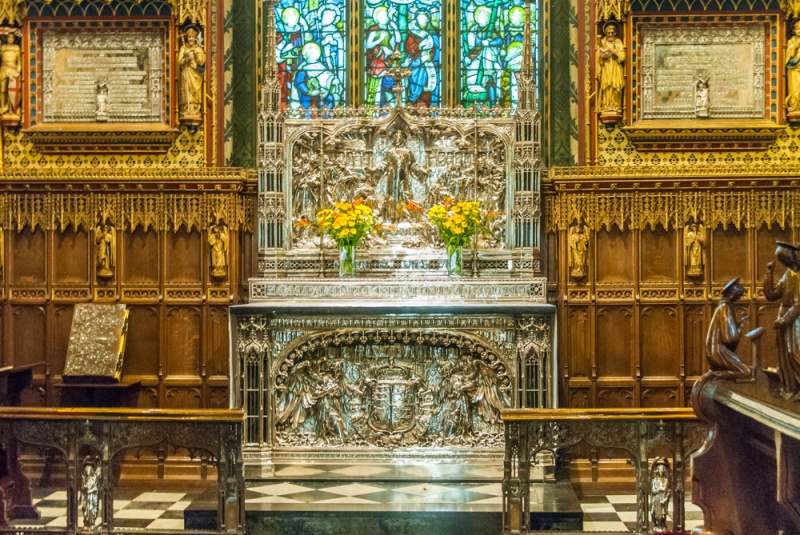Golden Wedding Anniversary
We celebrated our fiftieth wedding anniversary last month and our family bought us a gift of a two night clamping experience at Happy Valley in Griston, Norfolk. It was a total surprise and a wonderful idea. We set off for Norfolk on Monday heading for a day exploring the gardens at Sandringham. It was a beautiful day and the autumn colours were showing in some places.
We walked passed Sandringham House and the lake where the banks were covered with purple flowers.
The interior is a luxurious example of late Victorian style, with gilded woodwork and richly panelled walls. One of the highlights is a glittering silver altar and reredos given by Rodman Wannamaker, a wealthy American department store and newspaper owner, who had the pieces created as a memorial to Edward VII and gave them to Queen Alexandra after Edward's death in 1910.

Wannamaker also gave the striking wood and silver pulpit, and a 17th-century processional cross. Over the royal pew stands a statue of St George slaying a dragon.The entire chancel was presented to Queen Alexandra after her husband's death. By far the oldest object in the church is a 9th-century Greek font, and there is a second font made of Florentine marble. Other historic highlights include several panes of 16th-century stained glass.
St. Mary Magdalen, Sandringham
By now lunch was at the fore front of our mind so we went back to the visitors centre and had a meal at the restaurant. We then had a walk around the arboretum before heading to our destination.
We were given a very warm welcome on our arrival and shown to our shepherd's hut, King Nutkin. It was cosy and suitable equipped on the edge of the wood. We soon unpacked the car and settled in. We were surprised to find we were the only campers on site. Although we had our own bathroom it was about 100 yards from our cabin, down a hill.
We had a lovely log burner, which soon warmed the cabin and an out door fire pit and bbq.
The hill to our bathroom
Knowing there would be no television, internet and a minimal phone signal we went equipped with a book and magazines to read and a couple of games.
After a good nights sleep Tuesday arrived. We wandered through the woods on some of the many footpaths and then went to Great Massington (the next village) for lunch at the Dabbling Duck. It was a busy pub that served a good selection of food.
Great Massingham was only a small village with a church, village pond, local shop, a primary school and a village hall. From here we travel as far as Castle Acre
It is rural village in north west Norfolk, it lies four miles north of Swaffham and to the west of the A1065 at the point where the river Nar is crossed by an ancient route known as the Peddars Way.
There is much to see in Castle Acre including the castle ruins and the Cluniac Priory.
The priory was founded by the Warenne family soon after the Norman Conquest. For almost 450 years Castle Acre Priory in Norfolk was the home and workplace of monks and their servants, a refuge for pilgrims, and a stopping point for royalty, clergy and nobility. It was also part of a vast monastic network centred on the great abbey of Cluny in France. Today the priory remains are among the finest and best-preserved monastic ruins in England.
The Bailey Gate is one of two stone gatehouses added to the settlement's massive earthwork defences in about 1200. The main road into the village still runs between its towers.
The Bailey Gate
The great earthworks at Castle Acre are some of the most impressive in the country and convey the power of the medieval fortress.
Some of the earth works surrounding the castle
Bridge crossing to the main castle
.jpg)
.jpg)
.jpg)
.jpg)

.jpg)
.jpg)
.jpg)

.jpg)
.jpg)
.jpg)
Comments
Post a Comment